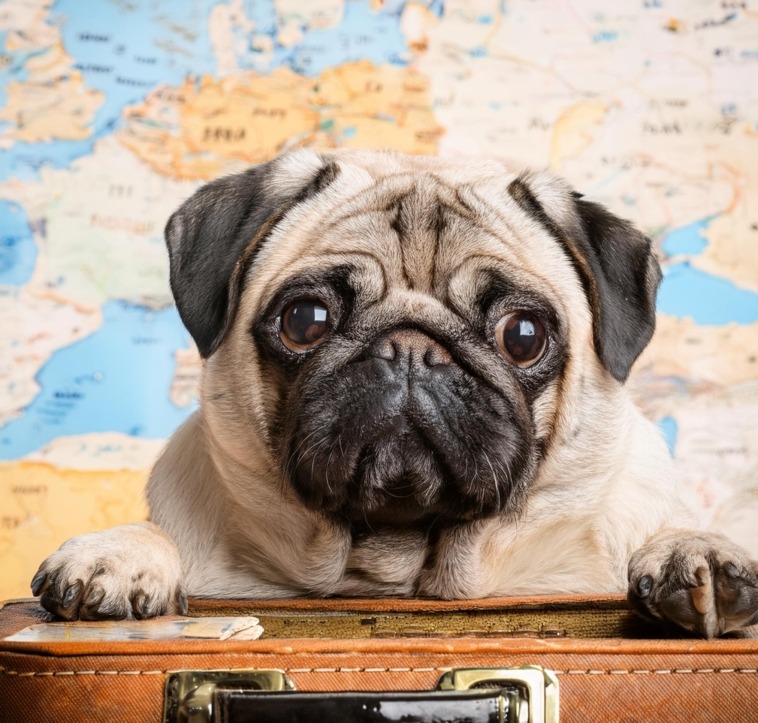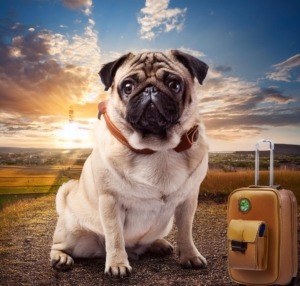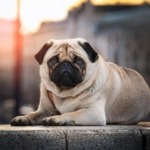Last updated on October 24th, 2024
Here’s an overview:
Origins of the Pug: From Ancient China to European
The Pug’s Journey to Europe: Royalty and Aristocracy
Art and Literature: Pugs in European Culture
A historical overview of Pugs and Fashion
Pugs in Modern Europe: From Pets to Pop Icons
The Role of Pug Clubs and Associations in Europe
Challenges Faced by European Pugs: Health and Welfare Issues
Conclusion: The Legacy of Pugs in European Culture
Introduction: The beloved pug
Pugs have always had an irresistibly cute look and a gregarious personality. Their famous appearance, characterized by a flattened snout, wrinkles, and a curly tail, has helped them stay in demand for centuries as pets. They are popular because of their friendliness towards people both within and outside the family. Historically they were symbols of high status and often lived luxuriously with Chinese nobles. Playful disposition, faithfulness and adaptability make these dogs ideal companions. Thus they possess attributes that have attracted them to different societies throughout generations. Let’s talk about the Pug journey to Europe
Origins of the Pug: From Ancient China to European Shores.
The history of the pug started in ancient China where it was bred for the imperial families during Shang Dynasty (1600–1046 BCE). This breed with its distinct physique and friendly nature was kept by the elite class in China.
Key Points about Pug’s Ancient Heritage:
- Breeding Purpose: To be used as pets by Chinese emperors
- Physical Characteristics: Flat face, big eyes and short coat.
- Status Symbol: Elite would keep them as pets.
Thus began their cultural integration when “the Dutch East India Company” brought pugs into Europe through trade routes established between 16th century markets.
The Pug’s Journey to Europe: Royalty and Aristocracy
Pug’s to Europe arrived from the East in the sixteenth century where it became popular among royal courts starting from there. These lovely little creatures soon became a distinguishing feature of higher classes when introduced to nobility.
- Dutch Royalty: Many members of the House of Orange held pugs dear especially Prince William who owned Pompey his pug which saved his life according to legend.
- French Aristocracy: Marie Antoinette adored them too.
- British Influence: In England, wealthy people owned many pugs that were sometimes depicted on canvases or written about in stories.
It was, therefore, difficult to separate the pug from socio-economically elite in Europe.
How Pugs Won European Hearts
Pugs were delivered over to Europe in the 16th century. Their cute look charmed European aristocrats at once.
Key Factors Leading to Popularity after the Pug’s Journey to Europe
- Royal Affection: Even monarchs loved them like Queen Victoria from England.
- Art and Literature: They figured in paintings and classical works of art.
- Social Symbol: Rich people bought pugs to show their high social status.
- Distinctive Traits: Remarkable looks set these dogs apart as any other breed with expressive faces they had.
Thus, pugs have remained as part of cultural artifacts whose motifs demonstrate their ever-enduring popularity among Europeans.
Pug Breeding in Europe
During this period, pugs were rare breeds only for European aristocracy. However, these same animals came into Europe through the Dutch traders who first brought them on the continent. At first it meant belonging to upper crusts or nobility when someone owned such an animal as a pet,
Key Events in Pug Breeding
- Dutch Influence: These dogs were imported by Dutch traders from China.
- Royal Patronage: Such rulers as Queen Victoria of England and Louis XIV bred and promoted them.
- Standardization: Kennel clubs emerged during 19th century which established standards for keeping these animals called pugs.
Impact on Society
- Middle class became dog owners.
- Royal pets turned into ordinary companions.
Art and Literature: Pugs in European Culture
In European visual arts and literature, the image of a pug has frequently been used as a symbol of loyalty or charm or refinement.
- Paintings: Pugs are found in many European portraits from the 17th to 19th centuries. Even artists like William Hogarth included pugs for elegance.
- Literature: In their works, some 18th-century authors talked about pugs, often focusing on their friendly nature.
- Royalties: Among the European royals, pugs were favored. Marie Antoinette and Queen Victoria for instance kept pugs as precious pets.
- Symbolism: Often representing devotion and friendship, pugs are loved by readers of books and those interested in art just as much.
A historical overview of Pugs and Fashion
After the Journey to Europe Pugs have played a significant role within fashion. Their distinct appearance and affectionate character has made them appealing to different classes of people.
- 16th Century: Entered Europe as pets adopted by noble families.
- 17th Century: They became popular symbols of wealth and style during this century with Queen Victoria making them famous ones.
- 18th Century: Featured in accessories and paintings in the form of pug motifs among other things.
- 19th Century: Shown in fashion plates and illustrations respectively
- 20th Century: Runways inspired designers’ designs they also featured in advertisements.
“Pugs have always been related to sophistication and gracefulness which reflects changes in fashion through time.”
Pugs in Modern Europe: From Pets to Pop Icons
In contemporary European cultures, pugs have ceased being ordinary animals to become cultural emblems since after the journey to Europe. They commonly appear:
- Fashion campaigns,
- Home decor
- Social media influencers posts
High-end brands employ these animals’ distinctive features with the aim of evoking classiness alongside playfulness using them as advertising tools; additionally, they occur on:
- Television series
- Movies
- Lifestyle magazines
Their unique looks and communicative nature make them highly suitable for any kind of picture to upload online or share across social networks. At public appearances regarding various activities concerning celebrities in Europe, pugs are present to reinforce their role as cultural icons.
The Role of Pug Clubs and Associations in Europe
These organizations key objectives involves:
- Encouraging healthy breeding practices that prevent genetically related problems;
- Hosting shows and contests to reward breed standards;
- Educating about the care, training and health of a pug;
- Developing a platform where owners can share experiences and advice on pugs;
- Lobbying for laws that regulate animal welfare and standards.
This is why they make sure that pugs become not only pets, but also the most cherished members of canine society. Their influence spreads across different European countries thus creating an integrated network for people who love pugs.
Challenges Faced by European Pugs: Health and Welfare Issues
European Pugs encounter several health and welfare challenges. Some specific concerns include:
- Respiratory Problems: This breed often experiences Brachycephalic Obstructive Airway Syndrome (BOAS), which causes difficulty in breathing.
- Eye Conditions: Cases such as Corneal Ulcers or Dry Eyes are common due to their bulging eyes.
- Joint Disorders: Hip Dysplasia or Patellar Luxation, which are quite prevalent among them, usually affect their mobility.
- Skin Issues: Their skin folds cause Fold Dermatitis and Yeast Infections frequently result from this condition.
Therefore, regular veterinary care should be provided along with special attention from their owners.
Conclusion: The Legacy of Pugs in European Culture
The impact of pug on European culture cannot be ignored. From royal courts where they served as companions till now when every second family has its own little dog.
- Royal Companionship: Even queens like Queen Victoria favored these kinds of dogs among other European nobles.
- Art and Literature: Paintings often portray friendship, luxury, and companionship.
- Pop Culture: Today, pugs appear widely in films, commercials, and on the internet, highlighting their lasting popularity.
Their permanent prominence demonstrates a remarkable transition from ancient China to cherished European family animals.
Written by: Tawab Sukhera (Ethologist)




